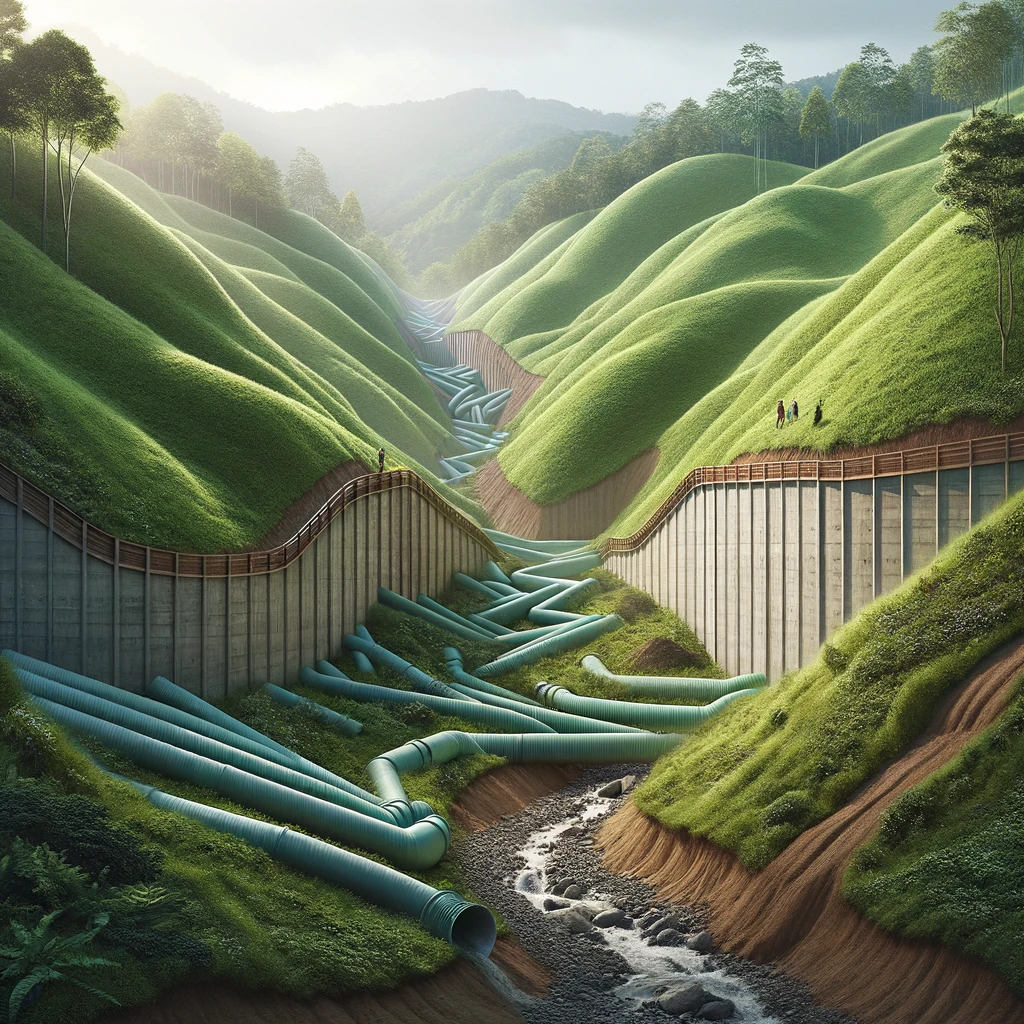Understanding the Basics of Landslides
Landslides are natural disasters that can have devastating effects on landscapes and communities. But how do you stop landslides from causing damage? Understanding their triggers and taking proactive measures are key. In this guide, we’ll delve into the causes of landslides and explore various strategies to prevent them, offering practical solutions to ensure safety and stability in landslide-prone areas.
What Causes Landslides?
To effectively stop landslides, it's essential to comprehend what causes them. Landslides occur when gravitational forces exceed the resisting forces holding the soil or rock in place. Several factors can trigger this imbalance:
- Heavy Rainfall: Excessive water increases the weight of the soil and reduces its stability, leading to slides.
- Earthquakes: Seismic activity can loosen and dislodge soil and rock, initiating a landslide.
- Human Activities: Construction, deforestation, and mining can destabilize slopes and contribute to landslides.
- Erosion: The gradual wearing away of soil by wind, water, or ice can weaken slope stability over time.
- Volcanic Activity: Eruptions can trigger landslides by depositing volcanic material or causing ground deformation.
Understanding these triggers is the first step in devising effective methods to stop landslides.
Assessing Landslide Risk
Before implementing any measures to stop landslides, assessing the risk and potential impact is crucial. Here’s how you can evaluate landslide risk in your area:
Geotechnical Surveys
Geotechnical surveys involve analyzing soil composition, slope stability, and groundwater conditions. These surveys provide vital information on the potential for landslides and help in designing appropriate prevention measures.
Historical Data
Reviewing historical data on past landslides can offer insights into patterns and vulnerable areas. This data helps in understanding which regions are most at risk and what factors have contributed to previous events.
Slope Monitoring
Continuous monitoring of slopes can detect early signs of instability. Techniques include using inclinometers, GPS, and remote sensing to track ground movement and deformation.

Strategies to Stop Landslides
Once you understand the risks and triggers, various strategies can be employed to stop landslides effectively. Here are some of the most effective methods:
1. Proper Drainage Systems
Drainage systems are crucial in managing water flow and preventing landslides. By directing water away from vulnerable slopes, you can significantly reduce the risk of soil saturation and instability.
- Surface Drains: Channels and ditches can capture and redirect surface runoff.
- Subsurface Drains: These are installed below the ground to manage groundwater levels and reduce pore water pressure.
Effective drainage is a cornerstone in the fight to stop landslides.
2. Retaining Walls and Reinforcements
Retaining walls are structures designed to hold back soil and stabilize slopes. They come in various forms, each suited to different types of landslides and terrains.
- Gravity Walls: Rely on their weight to resist pressure from the retained material.
- Cantilever Walls: Use a horizontal beam structure to support the soil.
- Anchored Walls: Incorporate cables or anchors driven into the soil or rock for added stability.
Combining these walls with soil reinforcements like geotextiles and mesh can provide additional support and prevent soil movement.
3. Slope Stabilization Techniques
Stabilizing slopes directly is another effective way to stop landslides. Techniques include:
- Vegetation: Planting deep-rooted trees and shrubs can bind the soil together and absorb excess water.
- Terracing: Creating stepped levels on slopes reduces surface runoff and soil erosion.
- Grading: Reshaping the slope to a gentler angle decreases the gravitational forces acting on the soil.
These methods help in maintaining slope integrity and minimizing the risk of landslides.
4. Rockfall Barriers and Catchment Areas
In areas prone to rockfalls, rockfall barriers and catchment areas can be vital. These barriers intercept falling rocks, preventing them from reaching roads, buildings, or other vulnerable structures.
- Rockfall Nets: Flexible nets draped over the slope capture and slow down falling debris.
- Catchment Ditches: Excavated areas at the base of slopes collect fallen material safely.
Such measures are crucial for stopping landslides in rocky terrains.
5. Controlled Blasting
In some scenarios, controlled blasting can be used to remove unstable rock formations before they can cause a landslide. This method requires careful planning and execution to ensure safety and effectiveness.
Controlled blasting can preemptively stop landslides by eliminating potential hazards.
Case Studies: Successful Landslide Prevention
Examining real-world examples provides valuable lessons on how to stop landslides effectively. Here are a few notable case studies:
Hong Kong’s Slope Safety System
Hong Kong is known for its hilly terrain and frequent heavy rainfall, making it prone to landslides. The city has implemented a comprehensive Slope Safety System that includes:
- Regular Inspections: Monitoring over 57,000 man-made slopes.
- Public Awareness: Educating residents about landslide risks and prevention.
- Engineering Works: Strengthening slopes and installing drainage systems.
These efforts have significantly reduced landslide incidents, showcasing how a proactive approach can stop landslides.
The La Conchita Landslide
In 2005, a devastating landslide struck La Conchita, California, resulting in multiple fatalities and property destruction. In response, the community implemented several measures to stop landslides in the future:
- Reinforced Retaining Walls: Constructed to stabilize the hillside.
- Drainage Improvements: Upgraded to manage surface and subsurface water flow.
- Slope Re-grading: Adjusted the slope’s angle to reduce instability.
These actions have helped mitigate further landslide risks in the area.
Best Practices for Landslide Prevention
While specific measures vary depending on the location and conditions, several best practices can universally help in stopping landslides:
Regular Maintenance
Routine inspection and maintenance of slopes, drainage systems, and retaining structures are crucial. Addressing minor issues early can prevent them from developing into major problems.
Land Use Planning
Careful planning and regulation of land use in landslide-prone areas can prevent human activities from exacerbating risks. This includes restricting construction on vulnerable slopes and preserving natural vegetation.
Community Awareness
Educating communities about landslide risks and prevention measures empower them to take proactive steps. Public awareness campaigns and training can be invaluable in areas at high risk of landslides.
Technological Integration
Incorporating modern technology, such as remote sensing, geographical information systems (GIS), and early warning systems, enhances the ability to monitor and respond to landslide risks effectively.
Conclusion
Stopping landslides requires a multifaceted approach, combining understanding the causes, assessing risks, and implementing effective prevention measures. From proper drainage and retaining walls to slope stabilization and community awareness, every step is crucial in how to stop landslides.
At Unlimited Drilling & Foundations, we specialize in designing and implementing solutions to prevent landslides. With years of expertise and a commitment to safety and quality, we’re here to help you protect your property and ensure peace of mind. Contact us today to learn more about our services and how we can assist with your landslide prevention needs.

